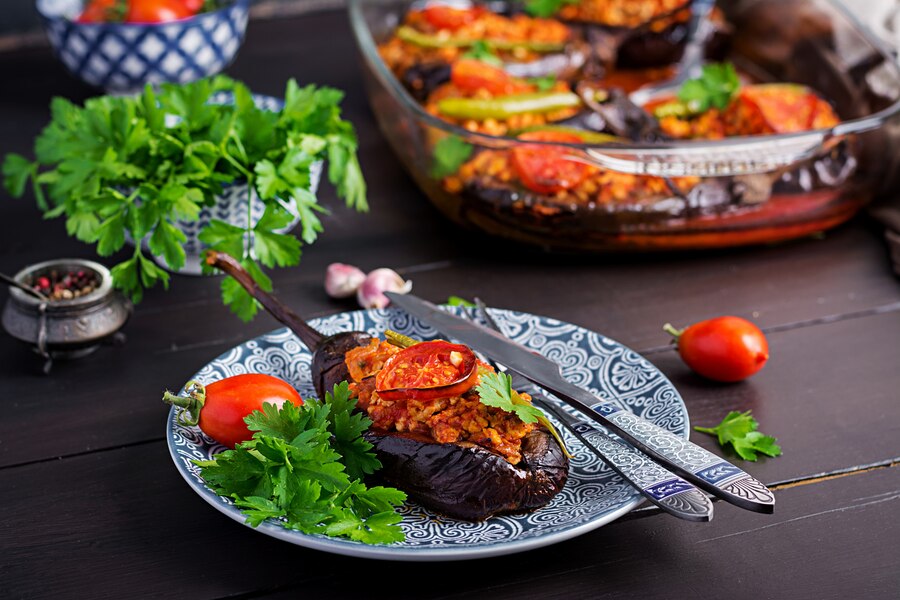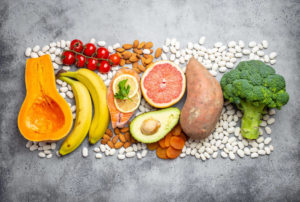FOOD
Crafting Memorable Dining Moments for Your Guests

In today’s competitive restaurant industry, standing out isn’t just about offering delectable dishes; it’s about creating unforgettable experiences for your guests. When customers dine out, they crave more than just a meal—they seek an experience that delights all their senses and leaves them yearning to return. In this blog post, we’ll explore innovative ways public-facing businesses like restaurants can enhance customer experience, ensuring patrons leave with a smile and a story to share.
Understanding Customer Expectations
Understanding what your customers expect is the first step in enhancing their experience. Today’s diners seek convenience, personalization, and atmosphere alongside quality food. Asking for feedback through surveys or casual conversations can provide invaluable insights. This understanding will guide decisions about menu offerings, service styles, and ambiance enhancements.
Customers appreciate when their preferences are acknowledged, such as remembering dietary restrictions or favorite seating areas. This level of attention makes guests feel valued and encourages repeat visits. By anticipating needs and addressing them promptly, restaurants can exceed expectations and build strong customer relationships.
Training staff to recognize and respond to customer cues enhances service quality. Empowering employees to make decisions that benefit the guest experience can significantly impact satisfaction. Investing in staff training fosters a culture of attentiveness and care, crucial for creating memorable dining moments.
Creating a Welcoming Atmosphere
The ambiance of a restaurant sets the tone for the entire dining experience. From lighting and decor to music and temperature, every detail contributes to the overall feel of the establishment. A welcoming atmosphere can transform a good meal into an exceptional experience.
Consider how lighting affects mood. Soft, warm lighting creates a cozy, intimate setting, while bright lights can energize and invigorate. Music should complement the restaurant’s theme and volume should allow for comfortable conversation. The right ambiance encourages guests to relax and enjoy their time.
Cleanliness is non-negotiable. Ensuring that the restaurant, including restrooms, is spotless demonstrates professionalism and respect for patrons. Regular maintenance, like timely plumbing repair in Provo, prevents disruptions that can detract from an otherwise pleasant visit.
Personalizing the Dining Experience
Personalization in dining can differentiate a restaurant from its competitors. Tailoring experiences to individual preferences creates a sense of exclusivity and value. Simple gestures, like addressing regulars by name or customizing dishes to suit dietary needs, make patrons feel special.
Utilizing technology for personalization has become increasingly popular. Digital menus that recommend dishes based on past orders or preferences enhance the dining experience. Loyalty programs offering personalized rewards not only encourage repeat visits but also foster a sense of community among guests.
Chefs can participate in personalizing experiences by occasionally visiting tables to discuss dishes, share stories behind ingredients, or offer cooking tips. These interactions build rapport and enrich the dining narrative, making guests feel like part of the restaurant’s extended family.
Streamlining Service with Technology
Incorporating technology can streamline operations and improve customer satisfaction. From online reservations to mobile payment options, technology offers convenience that modern diners appreciate. Efficient ordering systems reduce wait times and minimize errors, enhancing the overall dining experience.
Tablets or kiosks allow guests to browse menus, place orders, and pay bills at their leisure. This reduces pressure on waitstaff during peak times and enables them to focus on delivering personalized service. Additionally, integrating technology for contactless payments enhances safety and convenience for both staff and customers.
Implementing a robust feedback system helps restaurants gather real-time insights from patrons, enabling timely adjustments to meet customer needs. Encouraging online reviews and responding to them thoughtfully also demonstrates a commitment to continuous improvement and customer care.
Conclusion
Crafting memorable dining moments goes beyond serving delicious food—it’s about creating holistic experiences that cater to the diverse expectations of today’s diners. By understanding and exceeding customer expectations, fostering a welcoming atmosphere, personalizing interactions, and leveraging technology, restaurants can significantly enhance the dining experience.
Investing in staff training and maintenance also reinforces the dedication to quality and care that guests appreciate. As the landscape of the restaurant industry evolves, those who prioritize customer satisfaction and take proactive steps to innovate their approach will not only thrive but also cultivate loyal patrons who return time and time again.
FOOD
Casual Dresses: Your Ultimate Guide to Effortless Style

Dressing casually does not have to mean compromising on style. In the hustle and bustle of modern life, women across the globe are constantly seeking out wardrobe essentials that offer comfort without sacrificing elegance or individuality. Amongst these essentials, casual dresses stand out as versatile pieces that can take you from a laid-back brunch to an afternoon stroll in the city with seamless ease.
Understanding Casual Dresses
Casual dresses are characterised by their relaxed fit, comfortable fabrics, and ease of wear. These dresses are designed to be worn in everyday settings where strict dress codes do not apply. Whether you prefer a breezy midi, a playful skater, or a cosy sweater dress, the range of styles is extensive and caters to diverse tastes and body types.
When choosing a casual dress, it’s important to consider the occasion and the level of informality it demands. For instance, a jersey wrap dress could be ideal for running errands, while a flowy maxi might be better suited for a casual date by the beach.
The Convenience Factor
One of the major benefits of opting for casual dresses is the convenience they offer. A single, well-chosen piece can form a complete outfit, sparing you from the decision fatigue of mixing and matching separates. On days when you desire to look put-together with minimal effort, a casual dress is your go-to.
Selecting the Right Fabric
A crucial aspect of picking the perfect casual dress is the fabric. Breathable materials such as cotton, linen, and rayon are ideal for warmer months, while knits and heavier cotton blends will keep you snug in cooler weather. The right fabric not only enhances the dress’s comfort but also impacts its drape and overall aesthetic.
Finding Your Fit
Fit is paramount when it comes to selecting casual dresses. The goal is to find a silhouette that flatters your shape while ensuring you can move freely. An empire waist dress might suit those who prefer a more structured look, whereas an A-line dress allows for more room and is flattering on most body types. A cinched waist can accentuate curves, while a looser fit might cater to those seeking a laid-back vibe.
Colour and Patterns
With casual dresses, the spectrum of colours and patterns is virtually endless. Solid colours offer a canvas for accessories and can easily be dressed up or down. Patterns, on the other hand, can express personality and flair. From classic stripes to floral prints, the choices are plenty, and selecting a design that resonates with your personal style is key.
It’s worth considering the visual effect certain colours and patterns might have. Lighter shades and vertical stripes can have a lengthening effect, whereas darker hues typically provide a slimming appearance.
Accessorising Your Dress
Accessorising is an essential part of completing your casual dress ensemble. Simple additions like a belt can change the silhouette of a dress, while statement jewellery, scarves, or hats can elevate your outfit. Depending on your accessories, you can transform a basic dress into a standout piece fit for any casual occasion.
Seasonal Adaptability
Casual dresses are not confined to a particular season; they can be adapted to suit various climates. Layering is an effective strategy for transitioning a dress from summer to autumn. Adding tights, boots, and a chunky knit cardigan to a dress can keep the chill at bay while maintaining a stylish look.
In warmer weather, pairing your dress with sandals, a sunhat, and lightweight, airy fabrics can offer comfort and protection from the heat. In essence, with the right layers and accessories, your casual dress can be an all-season staple.
Shoes to Complement Your Dress
The shoes you pair with your casual dress can drastically alter its feel. Sporty sneakers can give off an urban, cool-girl vibe, while sandals might lend a more relaxed, Bohemian flair. If you’re looking to add a touch of sophistication, a pair of loafers or ankle boots might be just the right choice.
Durability and Care
Durability is another important consideration for casual dresses. Look for quality stitching and fabrics that can withstand regular washing. Proper care will extend the life of your dress, ensuring that you can enjoy its comfort and style for seasons to come. Always check the label for washing instructions to keep your dress in pristine condition.
Investing in Quality
While it may be tempting to skimp on the cost, investing in a higher quality casual dress can be more economical in the long run. Quality pieces tend to last longer, retain their shape and appearance, and provide better value for your money. Moreover, they can make you feel more confident and comfortable in your everyday wear.
Anchoring your casual wardrobe with a selection of dresses that offer versatility and comfort is a savvy move for anyone looking to simplify their sartorial choices while still making a fashionable statement. The right casual dresses combine functionality with flair, showing that you don’t have to compromise on style to enjoy the full comfort of dressing casually.
In conclusion, casual dresses are a cornerstone of effortless styling. They offer the ease of a one-piece outfit while providing endless possibilities for personalisation through accessories and layering. With careful selection and proper care, these versatile pieces can serve as valuable assets within any fashion-conscious individual’s wardrobe.
FOOD
Nessi Imam Bayildi 18.7oz: A Culinary Delight Worth Exploring

Imam Bayildi is a beloved Mediterranean dish steeped in history, rich flavors, and cultural significance. Among the many variations available today, the Nessi Imam Bayildi 18.7oz stands out as a convenient, high-quality option for those looking to enjoy this classic dish. In this article, we’ll dive deep into the world of Imam Bayildi, exploring its origins, nutritional benefits, and why the Nessi brand’s version deserves a spot in your pantry.
What Is Imam Bayildi?
Imam Bayildi, translating to “the imam fainted” in Turkish, is a traditional dish made from eggplants, onions, tomatoes, garlic, and olive oil. This vegetarian delight is slow-cooked to perfection, allowing the ingredients to meld into a rich and flavorful harmony. The dish is a staple in Mediterranean cuisine and is enjoyed as a main course, side dish, or even as a cold appetizer.
The Legend Behind the Name
The name “Imam Bayildi” is steeped in folklore. One popular tale suggests that an imam (a Muslim religious leader) fainted upon tasting the dish because it was so delicious. Another version claims that the imam fainted after learning about the amount of expensive olive oil used to prepare it. Regardless of which story you prefer, there’s no denying the dish’s ability to leave a lasting impression.
Nessi Imam Bayildi 18.7oz: A Convenient Option
Nessi’s Imam Bayildi in an 18.7oz can offers the perfect solution for those seeking authentic Mediterranean flavors without the time and effort required for traditional preparation. Let’s explore why this product is a game-changer.
1. Authentic Taste
Nessi stays true to the traditional recipe, using high-quality ingredients to deliver the rich, savory flavors that make Imam Bayildi a timeless classic. The blend of tender eggplant, tangy tomatoes, and aromatic garlic ensures an authentic experience with every bite.
2. Ready-to-Eat Convenience
Life can be busy, and cooking a dish like Imam Bayildi from scratch may not always be feasible. Nessi’s ready-to-eat version eliminates the hassle, allowing you to enjoy this Mediterranean delicacy straight out of the can. Simply heat and serve, or enjoy it cold as a refreshing appetizer.
3. Perfect for Various Dietary Needs
As a plant-based dish, Nessi Imam Bayildi is naturally vegan and vegetarian-friendly. It’s also gluten-free, making it an excellent choice for individuals with dietary restrictions.
4. Long Shelf Life
The 18.7oz can is designed for extended shelf life, ensuring you always have a delicious and nutritious meal option on hand. This makes it a practical addition to your pantry, especially for last-minute meals or unexpected guests.
Nutritional Benefits of Imam Bayildi
Here’s a breakdown of the key health benefits:
Rich in Antioxidants
Eggplants, a primary ingredient, are rich in antioxidants like nasunin, which helps protect cells from damage. Tomatoes add a dose of lycopene, known for its anti-inflammatory and heart-health benefits.
Low in Calories
This dish is naturally low in calories, making it an excellent choice for those looking to maintain a healthy weight without sacrificing flavor.
High in Fiber
The combination of eggplant, onions, and tomatoes provides a good amount of dietary fiber, supporting digestive health and promoting a feeling of fullness.
Heart-Healthy Fats
The olive oil used in Imam Bayildi is a source of monounsaturated fats, which are known to support heart health and reduce bad cholesterol levels.
How to Serve Nessi Imam Bayildi
One of the best things about Nessi Imam Bayildi 18.7oz is its versatility. Here are some serving suggestions to inspire your next meal:
1. As a Main Course
Serve Nessi Imam Bayildi warm with a side of crusty bread or over a bed of rice for a satisfying main course.
2. As a Side Dish
Pair it with grilled meats, fish, or other Mediterranean favorites like hummus and tzatziki for a well-rounded meal.
3. As a Cold Appetizer
Chill the dish in the refrigerator and serve it cold as part of a meze platter, alongside olives, feta cheese, and pita bread.
4. In Wraps and Sandwiches
Use Nessi Imam Bayildi as a filling for wraps or sandwiches for a quick and flavorful lunch option.
Comparison Chart: Nessi Imam Bayildi vs. Homemade and Other Brands
| Feature | Nessi Imam Bayildi 18.7oz | Homemade Imam Bayildi | Other Canned Brands |
|---|---|---|---|
| Preparation Time | Ready-to-eat | 2-3 hours | Varies |
| Taste Authenticity | High | Authentic | Depends on the brand |
| Nutritional Value | Preserved | Fresh | May vary |
| Dietary Suitability | Vegan, gluten-free | Vegan, gluten-free | Varies |
| Shelf Life | Long | Short | Long |
| Convenience | High | Low | Medium |
Where to Buy Nessi Imam Bayildi 18.7oz
Nessi Imam Bayildi is widely available at specialty grocery stores, Mediterranean markets, and online retailers. When purchasing online, be sure to check customer reviews and product descriptions to ensure authenticity and quality.
Top Online Platforms to Consider
- Amazon: A trusted platform offering fast delivery and customer reviews to guide your purchase.
- Mediterranean Specialty Stores: Many online stores focus on authentic Mediterranean products and often carry Nessi.
- Local Grocery Chains: Some grocery stores with international sections may stock Nessi products.
Why Choose Nessi Imam Bayildi 18.7oz?
Nessi Imam Bayildi offers an unbeatable combination of authentic taste, convenience, and nutritional benefits. Whether you’re new to Mediterranean cuisine or a seasoned enthusiast, this product makes it easy to enjoy a classic dish without compromise.
Final Thoughts
Imam Bayildi is more than just a dish; it’s a cultural experience that brings the flavors of the Mediterranean to your table. With Nessi Imam Bayildi 18.7oz, you can enjoy this timeless classic with minimal effort. Its high-quality ingredients, ready-to-eat convenience, and versatility make it a must-have for food lovers everywhere. So why wait? Add Nessi Imam Bayildi to your pantry today and savor the taste of tradition.
FOOD
Exploring The Benefits Of Natural Foods For A Healthier Lifestyle

Natural food, unprocessed and free from synthetic ingredients, is gaining popularity fast. Scientific studies show that organic foods have more nutrients and fewer pesticides.
A food scoring system in 2021 even ranked legumes, fruits, and fish as top choices for health. Plus, eating natural foods can lower risks of Type 2 Diabetes and some cancers.
Ready to learn how natural foods can change your life? Let’s dig in!
What Are Natural Foods?
Natural foods are simple, clean, and close to their original state. They avoid synthetic chemicals like preservatives, dyes, or artificial flavors. Fresh produce, lean proteins, whole grains, and healthy fats are great examples.
These foods often come from local farms or organic sources that focus on quality over mass production. Non-GMO options also count here since they skip genetic modifications. Food in its purest form is the best fuel for your body.
Unprocessed foods pack more nutrients than processed ones filled with sugar and unhealthy fats. Organic food shows lower levels of toxic heavy metals like cadmium—great news for long-term health! Choosing chemical-free options supports both your well-being and clean eating goals while reducing exposure to harmful additives.
Moving toward natural choices unlocks countless benefits for a healthier lifestyle ahead!
Key Benefits of Natural Foods

Natural food offers significant health benefits. They can genuinely help you feel healthier, both physically and mentally.
Improved Nutritional Value
Organic produce often contains higher levels of nutrients compared to conventional options. Studies show that pesticide-free fruits and vegetables offer better vitamins, minerals, and antioxidants.
For example, dark leafy greens like spinach pack more iron and calcium when grown without chemicals.
Eating nutrient-dense foods supports overall health. Small fish like sardines provide omega-3s and calcium, while eggs deliver high-quality protein. A diet rich in these options may lower risks of Type 2 diabetes and certain cancers.
Scientific research links organic food consumption with improved long-term health outcomes.
Reduced Exposure to Additives and Preservatives
Cutting out synthetic additives lowers health risks. Many of these chemicals, like artificial dyes or preservatives, can cause allergies and other reactions in sensitive people. Natural foods avoid this by using safer options from plants or essential oils.
These natural substitutes even add nutritional benefits while keeping food fresh.
Synthetic additives have raised safety concerns for years. Regulatory groups in the U.S. and EU keep a close eye on them but differ on what they allow. This makes chemical-free choices more appealing to consumers looking for healthy eating habits.
Choosing clean-label products supports nontoxic lifestyles and sustainable agriculture practices too!
How to Incorporate Natural Foods Into Your Diet
Eating natural foods can feel overwhelming at first, but it doesn’t have to be. Small steps make the process easier and more sustainable.
- Plan Your Meals
Make a weekly meal plan with fruits, vegetables, and whole grains as the focus. This saves time and helps avoid processed food temptations. Plus, having a grocery list stops impulse buying, especially if you shop after a meal instead of on an empty stomach.
- Cook More at Home
Homemade meals give you full control over ingredients. Try easy dishes like vegetable stir-fry or grilled chicken with quinoa. Experimenting in your kitchen makes healthy eating fun and rewarding!
- Choose Whole Grains
Swap refined bread and pasta for options like brown rice or oatmeal. These boost energy and help cut risks of diabetes, heart disease, and cancer over time. Small swaps add up quickly!
- Snack Smartly
Replace chips or candy with raw nuts, fresh fruits, or yogurt drizzled with honey. Keep these snacks handy for busy days when hunger strikes out of nowhere.
- Stay Hydrated
Drink plenty of water throughout the day to reduce appetite and improve metabolism. Aim for 8 glasses daily to support weight management goals while keeping energy levels stable.
- Shop Mindfully
Read labels carefully to pick nutrient-dense foods without added sugars or chemicals hiding inside them! Stick mostly to fresh produce sections instead of packaged or frozen aisles.
- Gradually Add Changes
Start small by replacing just one processed item each week with something natural like apples or carrots instead of sugary snacks—small wins matter!
Conclusion
Natural foods can truly transform your lifestyle. They boost energy, strengthen bones, and improve mental health, laying the foundation for a more balanced and fulfilling life. By incorporating fruits, vegetables, and whole grains into your meals, you’ll not only feel more vibrant but also help safeguard yourself against chronic illnesses. Beyond the health benefits, embracing natural foods supports sustainable agriculture and reduces environmental harm, aligning your personal choices with a global impact. These small changes lead to significant improvements in well-being, creating a ripple effect for your family’s health and happiness. Start today—your body, mind, and planet will thank you!

 Cartoon1 year ago
Cartoon1 year agoUnlocking the Potential of Nekopoi.care: A Comprehensive Guide

 Game1 year ago
Game1 year agoExploring Aopickleballthietke.com: Your Ultimate Pickleball Destination

 BUSINESS1 year ago
BUSINESS1 year agoWhat Companies Are In The Consumer Services Field

 BUSINESS11 months ago
BUSINESS11 months agoUnraveling the Mystery of 405 Howard Street San Francisco charge on Credit Card

 HOME IMPROVEMENT1 year ago
HOME IMPROVEMENT1 year agoVtrahe vs. Other Platforms: Which One Reigns Supreme?

 TECHNOLOGY11 months ago
TECHNOLOGY11 months agoThe Guide to Using Anon Vault for Secure Data Storage

 ENTERTAINMENT8 months ago
ENTERTAINMENT8 months agoUnderstanding Bunkr Album: A Comprehensive Guide

 ENTERTAINMENT1 year ago
ENTERTAINMENT1 year agoThe Epic Return: Revenge of the Iron-Blooded Sword Hound
















